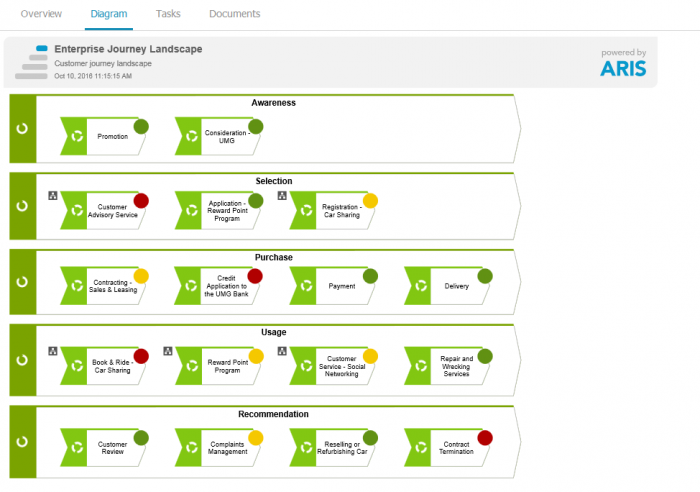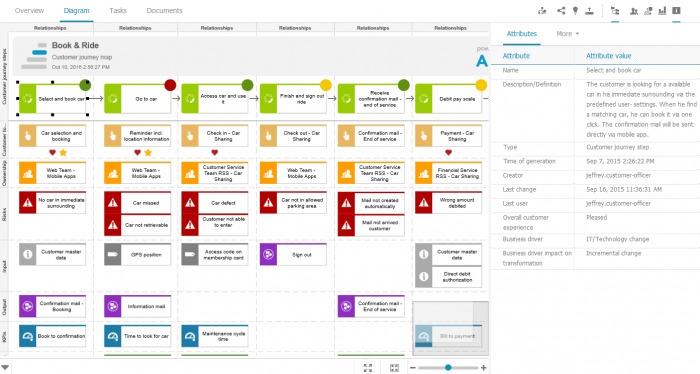According to Forrester Research, the revenue impact from a 10% improvement in customer experience can translate to over $1 billion in cost savings.
But Organizations often plan customer interactions from their own perspectives, rather than from a customer’s perspective and miss that great opportunity. Don't make the same mistake!
As promised in my last post today I will show today how you can view and improve your customer interactions entirely from the customers’ perspective, and encompass the journey with your business. I will start start top-down by creating a new customer journey map.
The first thing to do is define a customer lifecycle with steps. The structure and number of lifecycle steps will depend on each individual business situation. Then you can assign corresponding customer journeys to these steps. Traffic lights show where you need to improve or redesign priorities. This gives your stakeholders a first overview of different customer journeys.
Select a customer journey to open a detailed map. You’ll see an end-to-end view of all customer interactions with your business. Each customer step can be defined in more detail by adding descriptions and responsibilities in the attributes.
Customer touchpoints are at the core of customer journeys because they are where customers interact with your business.
Touchpoints can be linked to responsible owners, potential risks and suitable initiatives to help prevent problems, in- and output data, valuable KPIs, and channels that identify the communication medium. All this data can be used to create performance dashboards for executives about customer experience.
In the attributes, you can mark customer touchpoints as moments of truth, pain points, or best practices. A moment of truth is the point of decision at which your customers are either delighted or they abandon their journey with your business. By identifying pain points, you know what to fix to create an excellent customer experience.
Once you define customer touchpoints, you can reuse them in your business processes to link customer journeys with your business process landscape and improve business processes so that they become the backbone of your corresponding journeys.
Now you know how to model customer journeys and related customer touchpoints from a top down approach. In my next post I will show you how to start the other way around by identifying customer touchpoints in an existing process landscape.
In my next post I explain the bottom-up approach in ARIS.













